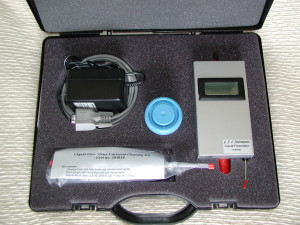How Accurate is your HPLC Pump?
As researchers know a critical if not the most critical aspect of an HPLC pump system is providing uniform and reproducible column retention times as analytes are pumped through a liquid chromatography system. This in turn relies on uniform and reproducible HPLC pump flow rates. After initial operational qualification (OQ) periodic calibration checks of HPLC pump systems must be undertaken to confirm OQ and to identify and correct flow rate variances that may develop due to factors such as worn pump seals or sediments that interfere with flow rates. These calibration tests are performed by checking flow rates while pumping solvent through the HPLC system.
HPLC Troubleshooting – the Hard Way and Easy Way
Several of our posts on the FlowCal 5000 digital liquid flow meter explain how the system works in comparison to manual methods. Taking a paragraph from our Flow Meter Buyers Guide researchers “can measure flow rates by using a timer and either volumetric or gravimetric measurement of collected solvent.” This is a time consuming, tedious approach prone to operator error. It is especially tedious when testing for low flow rates because multiple measurements are required in order to get an average reading.
Or they can couple the FlowCal 5000 flowmeter to collect solvent exiting from the HPLC system. Then the FlowCal 5000 takes over and makes repeated flow rate measurements that are sent via an RS232 interface to a printer or computer for record keeping. The researcher is free to do other work in the lab.
How the FlowCal 5000 Contributes to Efficiency
By replacing manual flow rate measurements with the FlowCal 5000 flowmeter researchers immediately will notice substantial increases in efficiency and improved accuracy when checking HPLC pump flow rates. Benefits include
- In-house portability. You can check multiple HPLC systems in a lab with a single FlowCal flowmeter simply by moving it from site to site. Hook it up to the HPLC pump system and go about your work until the analysis is completed, then move it to the next pump system. There is no need to be “tied” to a single system to manually complete flow rate checks.
- Mobility. The handy travel case with foam inserts holds the complete 12-ounce lightweight system including the mounting kit, cleaning kit, data gathering and power connections. This is a great feature for lab equipment service providers who travel between customer locations.
- Eliminates errors due to solvent evaporation. Solvent evaporation can occur when collected at low flow rates in a graduated cylinder. This can throw off the readings. Solvent evaporation is not an issue with the FlowCal 5000 because measurements are completed internally before the solvent discharges into a collection vessel.
Supplied with a UKAS calibration certificate (equivalent to NIST) and shipped in its own travel case the FlowCal 5000 is accurate to 1% of the reading with a guaranteed linearity from 0.05 to 25.00 ml/minute and is compatible with any HPLC system. Flow rate data are shown on the liquid crystal display and as noted above can be transferred via an RS 232 interface to a computer or to an optional battery powered mini printer for archiving.
Contact the scientists at Tovatech answer your questions on the application and use of our FlowCal 5000 digital liquid flow meter.

